(Before we begin - food adultery is something else, and not under this blog's purview.)
While the wealthier classes of the Georgian and Regency
periods were climbing on up through the cunning deployment of dinner parties to
raise their social status, the vast majority of people were naturally unable to
follow suit. Tea, sugar and white bread was in fashion for all classes –
trouble was, the poorer you were the more likely it was that any foodstuffs you
bought would be heavily adulterated, to make it go further or give it the
appearance of higher quality. Bread could be whitened with exciting things like alum (also known as hydrated potassium aluminium sulphate - yum), lime, chalk, or ground animal bones, and could not have been very tasty –
but hey, it was white. Ish. This would be eaten with a little cheese, or what
meat could be afforded – usually salted. Fish was an option, too, but was
considered far inferior to meat – oysters, now ironically a symbol of wealth
and taste, were incredibly cheap and common, especially by the coast.
A healthy balanced diet
Drinking options were not much healthier. Tea – always in
short supply except for the very rich – could be dried out and re-darkened with
healthy additives such as… lead. Even beer, a longtime English staple, was
often darkened and flavoured with treacle to make it appear better in quality.
Basically, choice of drink for the very poor – particularly in large towns or
cities – was limited to possibly-tainted tea or alcohol. Polluted or unsafe
water was nothing new in England,
but previously the standard drink had been beer – full of sustaining calories,
not too alcoholic, and even a source of some vitamins from the grains used to
make it. Weak, sometimes lead-poisoned and as sugary as could be achieved, tea
was not exactly a healthy substitute unless you could afford to buy the best,
and few were wealthy enough for that. There was also the seductive lure of gin
– strong and cheap, it was more or less the drug of the day.
Gin Lane, William Hogarth 1751
Although Hogarth’s ‘Gin Lane’ was a none-too-subtle
exaggeration, it had some basis in truth. You could buy enough gin to get you ‘drunk
for a penny,’ (perhaps fifty pence in today’s money – Venetia Murray suggests
multiplying by fifty as a very general idea of what money in Georgian times
would be worth at the time her book High
Society was published – 1998.) and ‘dead drunk for twopence.’ Around 1750
it was estimated that one in fifteen houses sold gin – and that’s a lot, by any
standard.
Recipe selection for demonstrating food eaten by poor
Georgians was a tricky one – I have no particular desire to eat chalky bread or
drink lead-flavoured tea with possibly-off milk and sugar. (Some sacrifices are
too far; I really hate sugar in tea.) I had a look through the simpler recipes
in cookbooks that make claim to economy, instead, and there is a definite
porridgy theme – a call-back to when pottages of grains or dried peas were the
staple instead of ‘white’ bread.
From Hannah Glasse 'The art of cookery', 1774
Here’s one using barley – this sort of food was very much
for filling the gaps, and was sometimes sold as a kind of street-food, as it
could be cooked in advance and reheated quickly. I’m fairly sure Mrs Glasse
meant ‘put your wheat into a sauce-pan’ with water, but
being an intrepid and literal-minded blogger, I did try it without first.
No.
It tasted a bit like a cross between popcorn and nuts – but
rather hard to eat. Experiment conclusive, then – always boil the barley even
if the recipe doesn’t say so. The second try was far better – I boiled the
pearl barley hard for a good twenty minutes (and it could have done with more –
maybe half an hour’s simmering would be more effective). Then a blob of butter,
a spoonful of sugar, and some ground nutmeg, plus the drained barley.
Not a historically-accurate nutmeg grinder -
a small grater would have been more the thing.
It tastes… fine? However, the barley is a strange texture –
not helped by my attempt being still a little chewy – and the only flavour came
from the butter, sugar and nutmeg – unhelpful for those who couldn’t afford
them. Still, give this one a go for the taste of an authentic Georgian snack or
breakfast. Just wash it down with a few tumblers of gin if it’s not to your
taste.
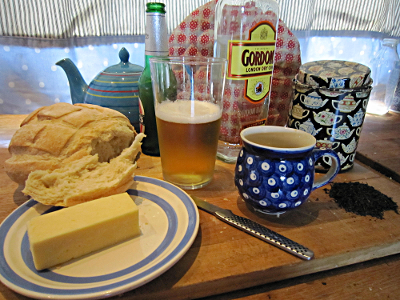
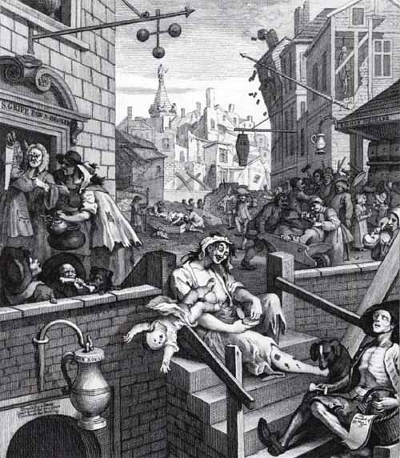

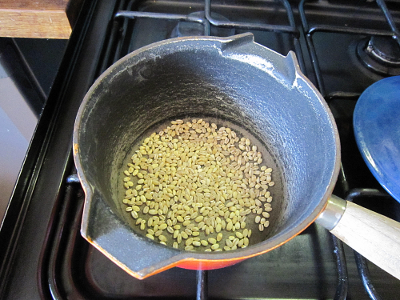
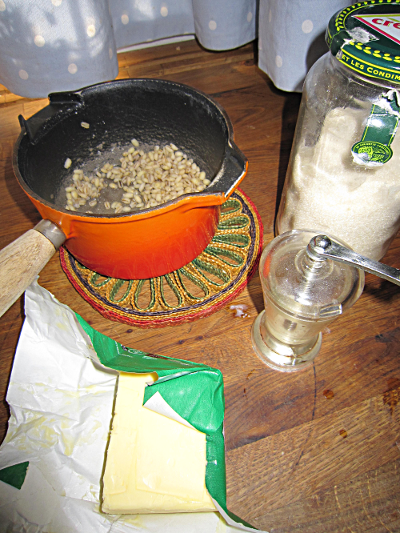
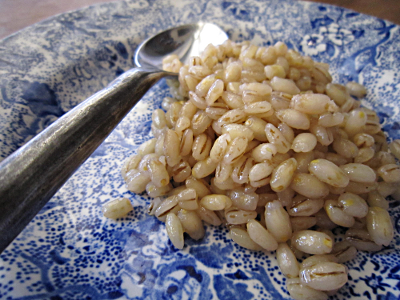
No comments:
Post a Comment